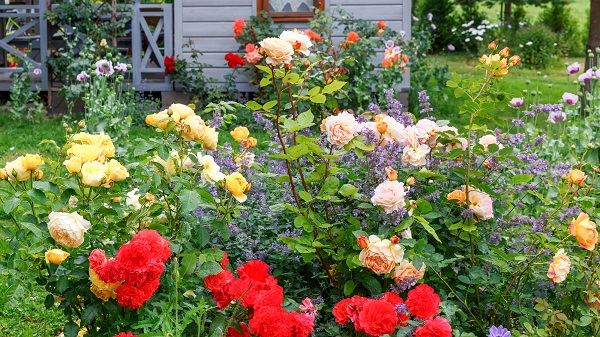Summer sure felt like one never-ending heat wave, didn’t it? There were times when it just felt like it was going to be summer forever and the heat would never go away — maybe that works for some people who live in hotter climates, but autumn is a welcome reprieve from summer.
Unfortunately, the arrival of fall means that your garden that you so lovingly cared for in the spring and summer is no longer blooming in all its colorful glory. It’s the nature of having a garden, we all know that.

However, it doesn’t mean that you need to leave it as is to languish through the cold months. There are things you can do to prep it for winter, set yourself up for a bountiful spring, and leave it looking lovely even though nothing is blooming or growing.
- Give the leaves you just raked up a new purpose and add them to your compost pile. You can also donate them to your community’s compost pile if you don’t personally have a compost pile. (But if you want to take the opportunity to get one started, check this out for great steps to get started.)
- Prune your perennials. Instead of pruning all the way to the ground, leave an inch or two poking above the ground so you remember where they are in the spring. That will help you plan what you want to plant next year and where. If you have flowers like black-eyed Susans or coneflowers and their seedheads are still in good shape, you should keep them untrimmed for the time being so you can have some interesting things to look at — just prune them before spring comes and new growth starts to come in.
- Remove your spent annuals. Add the dead plants to your compost pile once the first frost blackens them, but if they suffered from any disease throw them in your regular trash because if a diseased plant is composted, it will affect the entire pile and therefore the future of your garden.
- Buy tree guards for your saplings. Animals like mice and rabbits love sapling bark and may use the colder months to help themselves before they have to go into hibernation. Get your saplings wrapped up and protected.
- Add perennials that thrive in the fall months! Autumn doesn’t mean your garden has to look brown and dull until next spring. Add perennials like chrysanthemums, asters, goldenrod, and quite a few others to add color to your garden.
- If you have a section for vegetables you grew, now is a good time to clean the bed they grew in. Harvest absolutely all that you can, then completely remove all the foliage and rake to prevent the debris and insects from infecting the ground over the winter and ruining your crop next year.
As you can see, the arrival of autumn and the approaching winter months doesn’t have to mean the end of a colorful spring and summer garden. You can add color while also prepping your garden for a bountiful spring next year.
If you need help with your garden, contact Evergreen Landscaping today.
